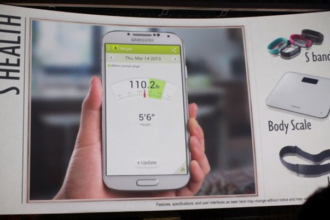Beginning with Stage 2 of Meaningful Use, patients and physicians have been increasingly required to use patient portals, with varied results. Perhaps this is due to a mismatch between what patients want and what portals provide?
Just about every electronic medical record vendor offers pre-integrated patient portal software. As was required by Stage 2 of the Meaningful Use incentive program, these systems offer only two standard, consistent features — the ability for patients to view, download, and/or transmit their protected health information (PHI), and the ability for patients and providers to exchange secure messages. While these are certainly useful features to both patients and providers, they are both solutions to a problem that could be better solved by alternatives. If EMR software had better interoperability, patients wouldn’t need to download their own PHI and send it to other providers, the physicians could take care of that themselves when arranging consults or referrals. And while some providers may appreciate being able to respond to patient messages electronically, saving them time spent on the phone or an unnecessary office visit, many resent any additional time spent interacting with a computer — and patients themselves usually prefer a phone call, according TechnologyAdvice’s research.
More than communication, patients seem to value the digital services that portals can provide, particularly younger generations.
Patient portals that offer online bill pay, online scheduling, and prescription refill requests not only save patients’ time, but providers’ as well. As these younger generations age, their preferences are unlikely to change, so physicians that already offer these services will likely continue to see high engagement numbers. Unfortunately, many patient portals don’t offer these features, and most physicians aren’t doing a great job of educating their patients about portal usage. Trying to get non-tech savvy patients to ‘engage’ with a patient portal can be even more difficult than trying to get a provider who has been using paper charts for 30 years to become a healthcare IT evangelist.
So, then, how do patient portal software developers proceed, especially in the light of the Meaningful Use Stage 3 proposed rule? Engaging patients can be difficult, even without seemingly arbitrary requirements for specific patient-portal interactions. It may be better to build out processes, software, or automated systems that can fulfill the data-gathering aims of CMS and payers. One of the proposed changes would require the development of open APIs for EMR/EHR vendors to semantically exchange information. This would essentially remove the need for patients to view, download, or transmit their PHI. There’s also a proposed increase to requirements for secure messaging: at least 35 percent of patients seen by an eligible professional (EP) must receive a message sent via the secure messaging interface, either post-visit or in response to a patient’s inquiry. Automatically generating discharge instructions and disseminating them via the secure messaging interface would seem to be the best way to meet this particular requirement. The one most likely to give providers fits — and the one patient portals can likely help with — is the requirement that patient-generated data be captured in the chart for more than 15 percent of patients seen by an EP.
While this patient-generated data requirement can be met by simple online pre-registration, one area of particular interest to patients and providers alike is the possibility of integrating patient wearable fitness trackers, like FitBit or Jawbone, with the patient chart, allowing providers to have a fuller picture of a patient’s activity level from a source that’s probably more trustworthy than the patient’s memory, even if there are questions about tracker accuracy. Portals and EHRs that integrate with data aggregation tools such as Apple’s HealthKit, Google’s Health, or substantially similar platforms, will have a leg up on the competition, even if there’s still doubt that many patients will want to provide this information.
Ultimately, even the most innovative patient portals are useless if they go unused. It isn’t enough to just deploy a patient portal system and EHR — physicians have to educate patients on how and why to use them. Online bill pay and scheduling have permeated many other industries, so it shouldn’t be difficult to get patients onboard. Other features, like pre-registration, may require explanation, but patients should recognize the benefit of not having to fill out a clipboard full of forms at the beginning of a visit.
What have you done to educate your patients about your patient portal, and how often do they use online bill-pay, pre-registration, or online scheduling? What benefits, if any, have you seen from your patient portal? Let us know in the comments.





